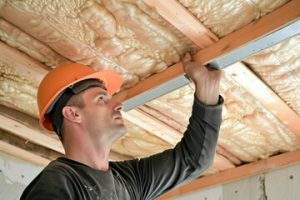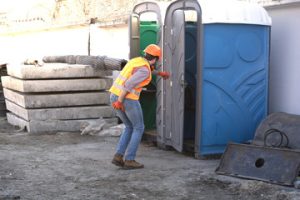Lawn care is an investment in your property that improves your yard’s appearance and value. Healthy lawns also contribute to a better environment by absorbing carbon dioxide, filtering pollutants from the air and water and providing habitat for beneficial insects.

Over time, soil can become compacted and thatchy. Aerating and dethatching relieves this buildup, allowing grass, plants, and trees easier access to nutrients, moisture and oxygen. Contact PristineCutsLawnCare for professional help.
A healthy lawn is one of the keys to a beautiful landscape. However, it requires a lot of care to stay lush and green. This includes regular mowing, fertilizing, and weed control. Some homeowners may choose to hire a professional to help them with this maintenance.
Proper mowing allows the grass to grow thicker and stronger. It also encourages the development of healthier roots. These roots allow the grass to penetrate deeper into soil, facilitating access to water and nutrients. This can be especially important during hot summer weather or dry spells.
Cutting your lawn too short is a common mistake that can cause weeds, diseases, and pests to thrive. This is because weed seeds are always lying dormant in the soil, waiting for the right conditions to sprout and spread across your yard. In addition, mowing too short exposes more of the grass to the sun, which causes it to wilt and become susceptible to damage from fungus and disease.
The best time to mow a lawn is in the late morning or early afternoon. This will prevent the blades from becoming damaged as they cool down and will reduce the chance of torn leaves. It is also a good idea to clean your mower and other lawn equipment before the beginning of the season.
As the warmer weather arrives in Tri-Cities and Yakima, many people begin spending more time outdoors in their yards. Lawns become a showcase for family barbecues, games with friends, and other outdoor activities. A well-maintained lawn enhances the look of your home, and it can also increase its resale value.
A lawn that has been properly mowed, watered, and fertilized can be the envy of your neighbors. Using nontoxic lawn care practices like mowing, watering, and fertilization will minimize the amount of chemicals that are used on your property.
Overtime, the soil in a lawn can become compacted and prevent it from absorbing water and nutrients. This can be remedied through aeration and dethatching, which will promote healthy root growth and allow for more even soil moisture.
Watering
The grass in your yard is a key part of the landscape and adds beauty to your home. It also protects water sources from soil erosion, controls runoff and filters potential pollutants. A healthy lawn requires consistent hydration. Proper lawn care practices will promote a thick, lush green turfgrass and minimize weeds.
Lawns need to be mowed at the right height to avoid stress to the plant and promote good health and vigor. Regular cutting prevents weed overgrowth and discourages shallow roots that make the lawn more susceptible to drought stress.
The best time to water the lawn is late night through early morning, when the sun has cooled and evaporation is minimal. Avoid watering during the hottest part of the day, as it invites disease and fungus. When watering, use a can to measure the amount of water used and place a screwdriver in the ground to test soil moisture. Aim for 1 inch of water per week, or more as needed.
A soil test will help you determine the type of soil your lawn has and how much to irrigate it. Different types of soil hold onto water differently. Sandy soils will require more frequent irrigation than clay soils, which tend to be compacted and limit the air space for nutrients, water and oxygen. A soil test will help you know how to best water your lawn for maximum benefit and minimum expense.
Watering the lawn at the proper frequency, depth and duration promotes a deep root system that is more resistant to drought and other environmental challenges. Frequent, shallow watering encourages a shallow root system and can lead to weed and disease problems. A deep root system will withstand stress better, and provide your lawn with the benefits of reduced mowing, fertilizing and chemical costs.
In addition to promoting healthy growth, the correct lawn care practices will minimize insect pests. Insects that damage grass include grubs, sod webworms, chinch bugs and billbugs. In addition to professional lawn care treatments, a comprehensive pest control program will keep these damaging insects under control.
Fertilizing
Fertilizing your lawn is one of the most important things you can do to keep it healthy. Fertilizer provides vital nutrients like nitrogen, phosphorous and potassium that help grass grow strong and dense. Proper fertilization also helps prevent weeds and pests. Getting a soil test done every 3 to 5 years will give you a good idea of what nutrients are missing from the soil and how much you need to add.
A good general-use lawn fertilizer will contain a blend of three primary nutrients – nitrogen, phosphorous and potassium. Nitrogen promotes growth and greenness, phosphorous encourages root development and is especially important in newly planted turf, and potassium improves plant tolerance to stress. The best time to apply a fertilizer is when the grass is actively growing.
Before fertilizing, declutter the space by removing sticks, debris and weeds. Then spread a two-inch layer of organic material, such as compost or well-rotted manure. This will improve the quality of your lawn’s soil, and it will prevent nutrient runoff that can pollute our bays and Long Island Sound. Next, water the area to soak in the fertilizer. Avoid applying fertilizer when it’s very hot or dry because the plants are already under stress. It’s also a good idea to use a spreader to distribute the fertilizer evenly. If you’re using a granular fertilizer, it’s best to start in the corner of the lawn and work across it in overlapping rows. If you use a liquid fertilizer, spray or drip the application in small sections.
When it comes to choosing a fertilizer, there are many options out there, but a quality product will have slow-release nitrogen sources such as urea or ammonium sulfate. The type of nitrogen that’s used in a particular fertilizer is also an important consideration. For example, sulfur (SCU) and plastic or poly coatings on urea (PCU and PSCU) slow the release of nitrogen so that the plants receive it slowly, rather than all at once. Using slower-release forms of nitrogen can reduce the risk of burning grass and excessive plant growth.
Weeding
As any gardener knows, weeds are the bane of a lush lawn. They rob grass of its nutrients, water and sunlight, so they are a major cause of poor lawn health. The good news is, you can control the growth of weeds with proper care and routine lawn treatment.
Regularly cutting your lawn at the right height prevents weeds from growing out of control. Grass is best cut between 3 to 4 inches, and you should never trim more than a third of the grass at any time. Watering properly also reduces weed overgrowth by ensuring the grass is adequately hydrated. However, watering too frequently can stress the turf and lead to fungal diseases.
Weeding is important because it keeps the lawn free of unwanted vegetation and gives the grass the space it needs to grow thicker and denser. There are several ways to get rid of weeds, including pulling by hand, spraying with vinegar or boiling water, using salt solutions or applying pre-emergent or post-emergent treatments. Vinegar, for example, only kills the visible parts of a weed, so it grows back quickly. And a salt solution can damage your lawn and nearby plants. The most effective way to kill weeds is to use a professional weed killer, which is made specifically for the type of weed and stage it’s in.
A healthy, well-tended lawn is not only a welcome addition to your home’s curb appeal, but it contributes to a healthier environment as well. It absorbs carbon dioxide, filters pollutants and soil erosion, and provides habitat for beneficial insects and wildlife. In addition, it offers many health benefits for you and your family, such as stress relief, improved mood, and increased physical activity.
The key to a healthy, weed-free lawn is keeping up with routine maintenance and using professional treatments when necessary. A luscious, well-groomed yard is also more attractive to potential buyers should you ever decide to sell your home, and it adds value to the property. So, if you’re looking for the best way to improve your property’s appearance and add to its resale value, start with professional lawn care services.








